 29 April 1952. A memorable day. Hartley University College, Southampton was granted a royal charter by Her Majesty The Queen (the first of her reign) to award its own degrees, and became the University of Southampton. As Her Majesty celebrates her Platinum Jubilee, so does the university with an interesting of program of events next month, on 14 May.
29 April 1952. A memorable day. Hartley University College, Southampton was granted a royal charter by Her Majesty The Queen (the first of her reign) to award its own degrees, and became the University of Southampton. As Her Majesty celebrates her Platinum Jubilee, so does the university with an interesting of program of events next month, on 14 May.
The University of Southampton is my alma mater. I graduated in July 1970 with a BSc combined honours degree in environmental botany and geography, after three very happy years there.
Anyway, having written in detail about the academics, I thought I’d put together a few anecdotes and tales of being a student at Southampton in the late 60s.
Mid-afternoon, late September/early October 1967. Almost 55 years ago, and I was searching for a seat on the train chartered by the university’s Student’s Union taking freshers from London’s Waterloo Station to Southampton.
Finding the last empty seat in one compartment, I sat next to Neil, a law student from Hemel Hempstead. Like me, Neil was heading to South Stoneham House, one of the university’s halls of residence on Wessex Lane, about a mile east of the Highfield campus, as were several others in the same railway compartment. Neil and I remained firm friends over the course of our degrees, and are still in touch today.

South Stoneham House – in its heyday.
Swaythling station, on the outskirts of the city, was the first stop where those joining South Stoneham, Connaught, and Montefiore halls were taken by coach the short distance to their destinations.
I had a room on the 6th floor as did Neil. Next door to me was John, also signed up for botany and geography. A couple of days later we discovered there were only five of us on that particular degree course.
Thus was my introduction to hall life, and looking forward to the next three years at the university.
So why had I chosen and ended up at Southampton? The university was not my first choice when I sent in my UCAS application the previous December. That honor went to King’s College, London to study for a degree in geography.
Back in the day, it was normal practice for all applicants to be interviewed. But, in February 1967, when the call came through to attend several interviews, I went down with the flu and had to reschedule all of them. Southampton was extremely accommodating. I contacted the university to say that I’d be in London on a certain day, and could I come on to Southampton the following day.
So, several weeks later, and on a bright, sunny, and quite warm day for the time of year, I was interviewed for about an hour by Dr Joyce Lambert, an ecologist and Reader in the Department of Botany, and Dr Brian Birch, a biogeographer and Lecturer from the Department of Geography.
I met them in the Geography department that, in those days, was based in the Hartley Building on the first floor at the rear, above the university administration offices and behind the university library.

The Hartley Building on University Road, Highfield, now the university library only.
I felt the interview had gone well. It’s hard to explain but I knew the moment that I walked through the doors of the Hartley Building that I could be very happy at Southampton. It just felt right! And a week or so later I received a generous offer of 3 Cs (in biology, geography, and/or English literature/general studies.
The first week at Southampton, Freshers’ Week, passed by in a blur. For many of us, this was our first time away from home. Freedom! Not only did we have to get used to the hall of residence regime, make new friends, there was the whole of the university to explore, very much smaller than it is today.
It was probably by the end of that week that we had our first introduction to the departments and our personal tutees. Joyce Lambert was my tutor in Botany, and Brian Birch in Geography, thus renewing directly my acquaintance from the interview. And also meeting the other members of the botany and geography cohort: Jane, Stuart, and Michael.
(I later learned that one of the combined honours students in the year ahead [1966 intake] reputedly was or became an infamous Mossad agent and assassin. I have had that ‘confirmed’ by someone who knew her).
Our course structure was explained, and in the case of geography we had to sign up immediately for a weekend of field trips around Southampton at the end of the first week of teaching. On one of those days we were taken to the northern outskirts of the city, and then as a group of more than 50 students, walked back into the city with the physical and historical geography features explained along the way. All in the pouring rain! Welcome to geography fieldwork.
Also at the end of Freshers’ Week, the Students’ Union organized the annual ‘Bun Fight’, where all the societies made pitches to recruit and welcome new members.
I signed up to join the English and Scottish Folk Dance Society, although I’d never danced a step before then. And dancing remained an enjoyable pastime during my three years.
From that initial folk dancing experience, I helped to found the university morris dance side, the Red Stags, at the beginning of my second year in October 1968.
The Red Stags are thriving 54 years later, as a mixed male/female Border morris side, but no longer associated with the university.
One other thing I remember about Freshers’ Week were the short trips around the city in the Toastrack, a 1929 vintage Dennis bus, owned and maintained by the Southampton University Engineering Society since 1958.

In the late 60s, Southampton was engineering-heavy, and about one quarter of all undergrads were studying for one engineering degree or another.
In South Stoneham House there were shared rooms in the original Queen Anne mansion but single occupancy ones in the 16 storey tower block erected in 1964. It was all male, fewer than 200 students all told. And woe betide any student with a girl in his room, or attempting to smuggle one out, after the curfew hour of 9 pm. Each room had a wash basin, and there were two baths and toilet/showers on each floor.
The accommodation included breakfast and dinner Monday to Saturday, and breakfast, lunch and afternoon tea on Sundays. Dinner was always formal, and we had to wear a black gown. A bit pretentious, I guess; Southampton trying to emulate an Oxbridge college in some respects.
I enjoyed life in South Stoneham, and when, towards the end of my first year I discovered I’d not secured a place for my second year, I decided to stand for Vice President of the Junior Common Room (JCR, as opposed to the Senior Common Room comprising the Warden and several faculty members who had rooms in hall). Being duly elected, I was automatically allocated a room, moving up to the 13th floor, with a south-facing view over the gardens and the banks of the River Itchen, and all the way down to Southampton docks.
As Vice President I took responsibility for various entertainments, including the Stoneham November dance and fireworks, as well as the May Ball. Neil and I also took on the firework display, and I had a budget of £20 or so (almost £400 today) to source appropriate display fireworks. I was called before the Bursar who gave me a ticking-off for storing the fireworks in my room, and ordering me to put them safely in the basement under lock and key.
For the May Ball, we developed a Parisian theme and review. A great success. I wonder if anyone recognizes a few faces.
In my third year, Neil and I moved into digs at No. 30 University Road, just down from the recently-opened University Administration Building and bookshop (now the Student Services Centre). After I left Southampton in 1970 many of the houses on that side of University Road were taken over by the university as departmental expansion space. No. 30 has now been demolished.
In the late 60s the university was beginning to expand, and new buildings were being put up. Just a year before I arrived there, Botany moved from an old building (now demolished I believe) that stood next to the Hartley Building to Building 44 (now named the Shackleton Building and housing the Geography and Psychology departments) along with geology. Of course Botany no longer exists as a separate department, merging with Zoology (and others?) after I’d left Southampton.
In my second year, Geography moved from the Hartley Building to the new Arts II, which now houses the Southampton Business School and the Music department (formerly located around the Nuffield Theatre).
And talking of the Administration Building. The late 60s were a radical time at Southampton, and rumors abounded that the new building would be occupied within days of its opening. And it came to pass, with the Vice Chancellor (Professor Sir Kenneth Mather FRS) having to remain in his old suite of offices until the students were evicted and the extensive damage repaired. Not the best of times.
Professor Mather came to Southampton from the University of Birmingham where he had been head of the Department of Genetics. He taught a course on population genetics to a class of third year botany and zoology students, and often claimed he was the only teaching Vice Chancellor in the country. After retiring from Southampton, he returned to Birmingham, keeping an office in the School of Biological Sciences. By 1981, I was also a faculty member at Birmingham, and Professor Mather had an office just down the corridor from mine. We often shared Southampton anecdotes.
During my first year I had to attend two field courses. The geography course was held in Swansea in late March 1968 just after the end of the Spring term. We stayed in one of the university halls of residence there, making field trips to see the legacy of the industrial revolution in the Swansea Valley, and the physical geography of the Gower Peninsula. The weather was mixed. It was warm enough on some days for bathing suits on the beach, but on the final morning we woke to almost 12 inches of snow!
I attended two botany field courses. The first, in July 1968, was based near the Burren in County Clare in the west of Ireland. We had a great time.
“There isn’t a tree to hang a man, water to drown a man nor soil to bury a man”.
A year later, we spent two weeks in Norfolk, which coincided with the first Moon landing by Armstrong and Aldrin.
I guess I was lucky to attend both botany field courses. Until 1970, the university did not allow any students to resit exams they had failed. One strike and you were out, even if the failed course was an ancillary one. And large numbers of students were asked to leave, even at the end of their second year. I scraped my first year ancillary geology course by a whisker.
It all came to a head in 1969 when a very large number (almost 50% if my memory serves me right) of second year chemists failed one or more exams and were expelled. That was a step too far. There was a student uproar. The expelled students were not re-admitted but resit exams were introduced the following year.
 Apart from the folk dancing, I guess I spent more than my fair share of time in the pub or the Student Union bar (in the old building), sometimes playing squash in the new Students’ Union building that had been opened in 1967. There were two pubs close to the university on Burgess Road, both now closed perhaps even demolished. I favored the Crown & Sceptre (above) over The Gate, and held my 21st birthday party there in November 1969.
Apart from the folk dancing, I guess I spent more than my fair share of time in the pub or the Student Union bar (in the old building), sometimes playing squash in the new Students’ Union building that had been opened in 1967. There were two pubs close to the university on Burgess Road, both now closed perhaps even demolished. I favored the Crown & Sceptre (above) over The Gate, and held my 21st birthday party there in November 1969.
In the summer term, we often had lunch on Saturday at a pub on Woodmill Lane (they did an excellent ploughman’s) on the bank of the River Itchen. It looks as if it’s no longer there. Across the road was a pitch and putt course.
Not having a car, I hardly ever went to the New Forest, but Bursledon on the Hamble River was much more easily accessible by train. My girlfriend Liz and I often missed Friday evening dinner in our respective halls for a pub meal at The Jolly Sailor overlooking the river (where they had an amazing selection of fruit wines). This pub featured several times in the BBC production Howard’s Way over six series from 1985 to 1990.
I joined the Folk Club that was held every Sunday evening in one of the Union bars. Tim Hart and Maddy Prior (later of Steeleye Span fame) were frequent performers at the club.
I even performed once or twice myself. And in February 1969, the Red Stags made their debut at a ceilidh that I organized, attended by several hundred students
I can remember attending only three rock concerts, and all during my first year, held in the Old Refectory.
The first was the Alan Price Set (former keyboard player with The Animals) on 25 November 1967. Then there was Pink Floyd on 26 January 1968 (without Syd Barrett) and supported by T-Rex. I can’t find a gig date for The Crazy World of Arthur Brown; in fact Southampton University is not even listed on several web lists. But he did perform because I remember him launching into his iconic Fire, and setting his hair alight!
Anyway, these are just a few of my Southampton memories. Good times, and an excellent launch pad for a later career in international agricultural research and academia.
On graduation in 1970 I moved to the University of Birmingham to study for an MSc in genetic resources conservation, and then completed a PhD on potatoes from Peru in 1975. I spent more than 8 years with the International Potato Center (CIP) in Peru and Costa Rica from January 1973, and another 19 years at the International Rice Research Institute (IRRI) in the Philippines from 1991. In between, I spent a decade teaching botany at Birmingham.
 Returning in 2010, I now just have happy memories of my time at Southampton and the successful career that stemmed from those first years. In 2012 I was awarded an OBE for services to international food science, and I like to think that in many ways it was a culmination of a career in science that began at Southampton in 1967.
Returning in 2010, I now just have happy memories of my time at Southampton and the successful career that stemmed from those first years. In 2012 I was awarded an OBE for services to international food science, and I like to think that in many ways it was a culmination of a career in science that began at Southampton in 1967.












 My best friend Alan Brennan, a year younger than me, lived just a few doors further up Moody Street. But we didn’t go to the same school. I was enrolled at Mossley C of E village school, a couple of miles south of the town, like my two brothers and sister before me. Each weekday morning, my elder brother Edgar (just over two years older than me) and I took the bus together from the High Street to Mossley. Sometimes, in the summer, I’d walk home on my own (something that parents wouldn’t even contemplate today).
My best friend Alan Brennan, a year younger than me, lived just a few doors further up Moody Street. But we didn’t go to the same school. I was enrolled at Mossley C of E village school, a couple of miles south of the town, like my two brothers and sister before me. Each weekday morning, my elder brother Edgar (just over two years older than me) and I took the bus together from the High Street to Mossley. Sometimes, in the summer, I’d walk home on my own (something that parents wouldn’t even contemplate today).


































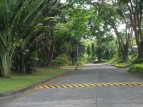



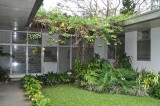




















 However, by the end of 2019 we had eventually decided to leave Bromsgrove and move north to Newcastle upon Tyne where our younger daughter Philippa and her family live. (Our elder daughter lives in Minnesota).
However, by the end of 2019 we had eventually decided to leave Bromsgrove and move north to Newcastle upon Tyne where our younger daughter Philippa and her family live. (Our elder daughter lives in Minnesota).




 I was never much good at taking exams. That is, until I studied for my Masters degree in Conservation and Utilization of Plant Genetic Resources at the University of Birmingham in 1970-1971. So how come I improved?
I was never much good at taking exams. That is, until I studied for my Masters degree in Conservation and Utilization of Plant Genetic Resources at the University of Birmingham in 1970-1971. So how come I improved?







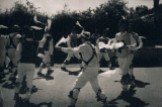






 In 1967, I was accepted on to a BSc degree course at the University of Southampton (on England’s south coast) to study environmental botany and geography. I’ve written
In 1967, I was accepted on to a BSc degree course at the University of Southampton (on England’s south coast) to study environmental botany and geography. I’ve written 





 18 November 1948. Today is my 70th birthday. Septuagenarian. The Biblical three score and ten (Psalm 90:10)!
18 November 1948. Today is my 70th birthday. Septuagenarian. The Biblical three score and ten (Psalm 90:10)!

































 I was also a cub scout, as was Ed.
I was also a cub scout, as was Ed.





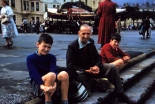








 I passed my 11 Plus exam to attend a Roman Catholic grammar school,
I passed my 11 Plus exam to attend a Roman Catholic grammar school, 

















 His younger colleague,
His younger colleague, 













 The first week of October 1967. 50 years ago, to the day and date. Monday 2 October.
The first week of October 1967. 50 years ago, to the day and date. Monday 2 October. I had a room on the sixth floor, with a view overlooking Woodmill Lane to the west, towards the university, approximately 1.2 miles and 25 minutes away on foot. In the next room to mine, or perhaps two doors away, I met John Grainger who was also signed up for the same course as me. John had grown up in Kenya where his father worked as an entomologist. Now that sounded quite exotic to me.
I had a room on the sixth floor, with a view overlooking Woodmill Lane to the west, towards the university, approximately 1.2 miles and 25 minutes away on foot. In the next room to mine, or perhaps two doors away, I met John Grainger who was also signed up for the same course as me. John had grown up in Kenya where his father worked as an entomologist. Now that sounded quite exotic to me.











 So what has brought all these memories to the surface. Well, I’m about halfway through a book I was given last Christmas called
So what has brought all these memories to the surface. Well, I’m about halfway through a book I was given last Christmas called 















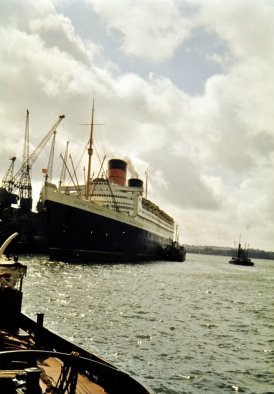
 Do you remember where you were on Sunday 20 July 1969? I do.
Do you remember where you were on Sunday 20 July 1969? I do.








![Jörg Hempel [CC BY-SA 3.0 de (http://creativecommons.org/licenses/by-sa/3.0/de/deed.en)], via Wikimedia Commons](https://mikejackson1948.files.wordpress.com/2015/02/dryas_octopetala_lc0327.jpg?w=200&h=267)




![By Sami Keinänen (www.flickr.com) [CC BY-SA 2.0 (http://creativecommons.org/licenses/by-sa/2.0)], via Wikimedia Commons](https://mikejackson1948.files.wordpress.com/2015/02/guinness.jpg?w=97&h=150) But all work and no play makes Jack(son) a dull boy. We had plenty of opportunity of letting our hair down. Every day when we returned from the field we were pleased to see a line of pints of Guinness that had already been poured in readiness for our arrival, around 5 pm. In the evening – besides enjoying a few more glasses of Guinness – we enjoyed dancing to a resident fiddler, Joseph Glynn, and a young barmaid who played the tin whistle. Since I had spent the previous year learning folk dancing, I organized several impromptu ceilidhs.
But all work and no play makes Jack(son) a dull boy. We had plenty of opportunity of letting our hair down. Every day when we returned from the field we were pleased to see a line of pints of Guinness that had already been poured in readiness for our arrival, around 5 pm. In the evening – besides enjoying a few more glasses of Guinness – we enjoyed dancing to a resident fiddler, Joseph Glynn, and a young barmaid who played the tin whistle. Since I had spent the previous year learning folk dancing, I organized several impromptu ceilidhs.


 Botanist. That’s right. Not plant scientist or plant biologist. Botanist!
Botanist. That’s right. Not plant scientist or plant biologist. Botanist!





 Another influence was Missouri Botanical Garden geneticist Edgar Anderson. If you’ve not read his highly entertaining and readable Plants, Man & Life, then grab yourself a copy.
Another influence was Missouri Botanical Garden geneticist Edgar Anderson. If you’ve not read his highly entertaining and readable Plants, Man & Life, then grab yourself a copy.



































